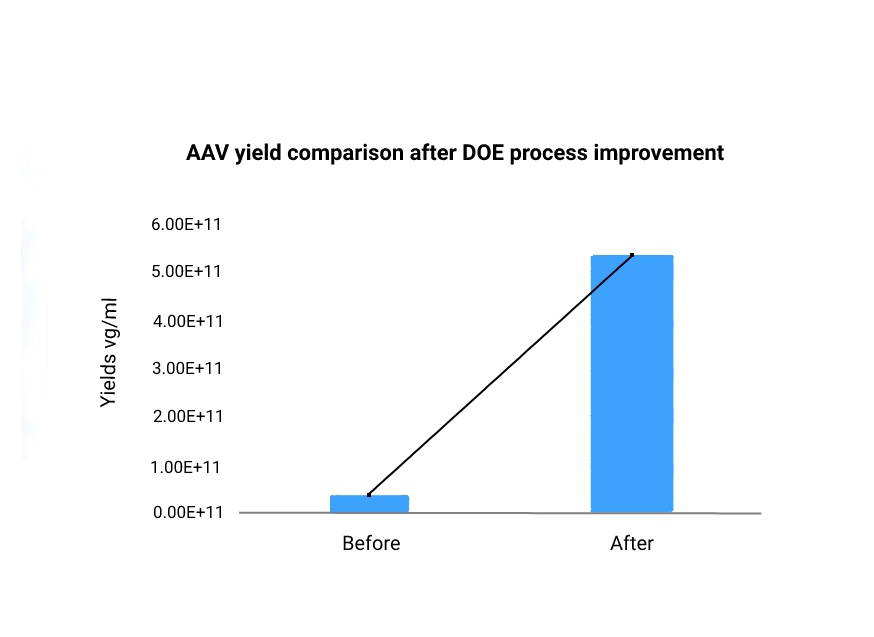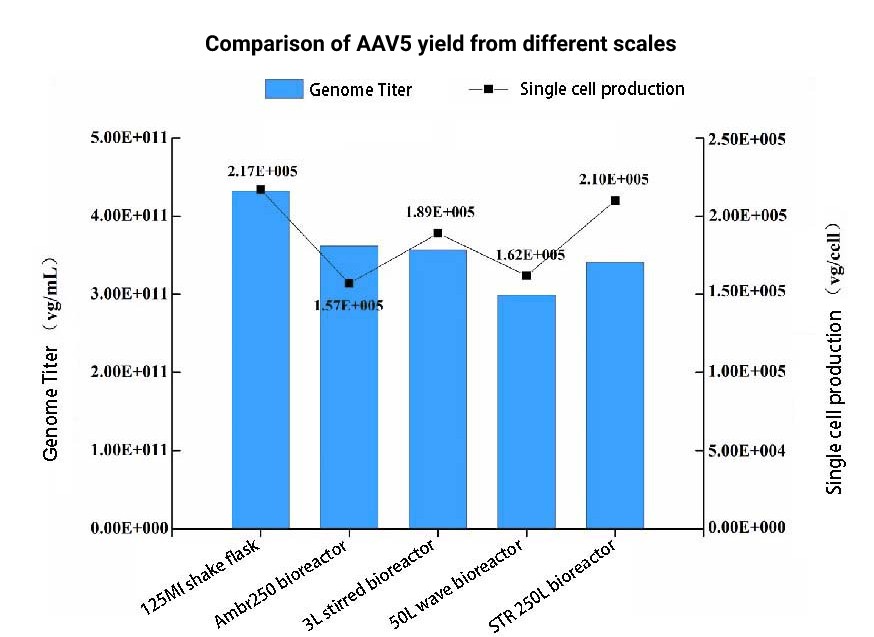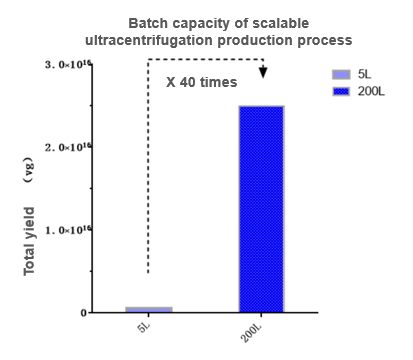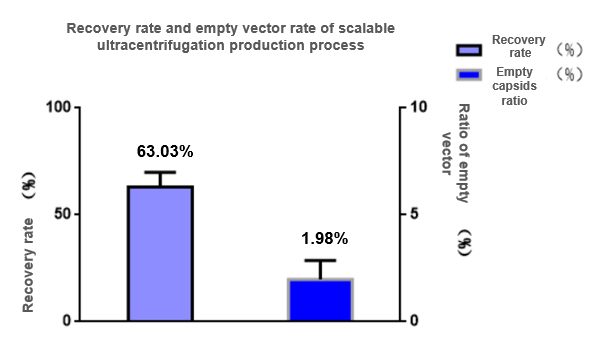PackGene’s proprietary π-Alpha 293 AAV High-yield Platform uses uniquely designed RC plasmid in the triple-plasmid transfection system to increase AAV production by 3 to 8 times for various AAV serotypes. This technology is paired with both in-process upstream and downstream QbD optimizations to increase total AAV yield up to 10 fold. A single batch of AAV production delivers up to 1E+17vg virus particles, which is enough to meet the needs of most clinical and commercial level of AAV production.
Efficiency
Proprietary technology and processes increase the AAV yield in HEK293 serum-free cell suspension systems by more than 10 fold.
Productivity
Our production process increases suspensive cell production by 10-25 fold.
Quality
Unique process development procedures greatly reduce the key impurities (HCD, endotoxin, etc.).
Viability
Key technology innovations reduce empty capsids rate and increase infection titer.
PackGene holds 6 patents for AAV-associated technologies with an additional 2 patents under review.


High-yield RC plasmid increases AAV yield by 3-8 times by adding non-coding regulatory elements to the Rep-Cap plasmid (patent pending).
Based on DOE experimental optimization of key process parameters, the total AAV yield is increased by more than 10 times
| DOE transfection conditions | DOE Engineering Parameters Ambr250 Reactor (Sartorius) | DOE Lysis and harvest conditions |
|---|---|---|
| Cell density, total plasmid, plasmid ratio, transfection reagent ratio | Stirring Speed, pH, Dissolved Oxygen, Temperature | Stirring speed, Density, Time, Temperature |




AAV production process using serum free 293 suspension cells (200L)


Actual AAV production up to 7.3E+16 vg (total yield) for 200L production system
TEM-Empty capsids<5%


Lower HC
Reducing the plasmid DNA residue (Packaged plasmid impurity) significantly by unique molecular modification on plasmid
| Sample | Relative proportion, % | ||
| ECs | VCs | ||
| Lighter capsids | Intermediate population | Heavier capsids | |
| AAV5-gfp a,b | |||
| 66S | 79S | 95S | |
| Affinity-purified AAV5 | 90.91 | 3.43 | 5.66 |
| EC peak fraction | 95.6 | 4.4 | ND |
| VC peak fraction | 19.81 | 14.69 | 65.50(89S) |
| AAV8-gfp a,b | |||
| 63S | 74S | 84S | |
| Affinity-purified AAV8 | 62.56 | 2.03 | 35.41 |
| EC peak fraction | 96.6 | ND | 3.4 |
| VC peak fraction | 3.13c | 4.22 | 92.65 |
| AAV6-gfp d | |||
| Affinity-purified AAV6 | 63.17 | 36.83 | |
| EC peak fraction | 93.28 | 6.72 | |
| VC peak fraction | 5.36 | 94.64 | |
| AAV6-cas9 d | |||
| Affinity-purified AAV6 | 60.59 | 39.41 | |
| EC peak fraction | 95.72 | 4.38 | |
| VC peak fraction | 4.54 | 95.46 | |
| AAV9-gfp d | |||
| Affinity-purified AAV9 | 67.63 | 32.37 | |
| EC peak fraction | 94.96 | 5.04 | |
| VC peak fraction | 5.28 | 94.72 | |

Reducing the plasmid DNA residue (Packaged plasmid impurity) significantly by unique molecular modification on plasmid


Scalable process by ultracentrifugation allows 200~500L batch production
| Characters | Descriptions |
| High yield | Design of RC plasmid increases AAV yield by 3-8 times |
| CPP optimization increases total AAV yields by 10 times | |
| Improved scalability | Stable scale-up process: from 125 mL to 200 L (suspension) |
| Scalable 200 L suspension process: 7.3E+16 vg yeild, >30% recovery rate | |
| Improved biosafety | HCD residue: 30~90 ng/1E13 vg (suspension) |
| Optimal full capsid ratio at harvest (20~66%) and at final (75~94%) | |
| Novel plasmid design decrease 90% encapsidated plasmid impurity |
π-Alpha 293 AAV High-yield Production Platform

